System and Strategy for interpreting Abstract Art
Based on my experience with the Baldwin Rivera Boggs Social Justice Hub assignment, I am able to improve my process and outcome of the final assignment. On the Hub assignment, I had a hard time developing a design for something I didn’t know anything about, especially when I was unable to access information. This made it difficult to follow the with/not for principle. The bulletin board idea for the assignment was undeveloped with little research and experience with the Hub. But, with the final assignment, I can use Jstor, Internet, museums and other resources to find information about the topic I’m researching to create a better, more thought-out project. For the prototype, I’m going to need to bring paper and something to create a mark with to class. The system to support my research question is to ask one or more people to create an image on a blank canvas. I am going to propose two experiments. For the first canvas, after the first person is finished creating their “masterpiece” I am going to cover it in white paint, and give it to the next person to create something new. Each time, I will tell the participants that there was something underneath it and after they are finished, I’ll show them photographs of what is underneath their creation. On the second canvas, I am going to follow the same process but I will not cover up the work done previously and it will be continuously manipulated by its multiple creators. I think this process exemplifies the symbolism of a blank canvas having endless possibilities. Each individual perceives its emptiness and potential to create nothing into something differently. In order to get a good variety of participants, I think I will use more than one canvas per experiment so that I’ll have more than one outcome for each system.
Considering I need to find people that are willing to spend the time to work on a painting that they cannot keep, I need to start the process as soon as possible. Because I am often surrounded by art students, my sample size will be mostly made up of The New School students and my audience is anyone who views and interprets the piece. I think it’ll be interesting to hear the different interpretations of the piece without the context of what it is and how it is made. Similar to abstract paintings (and other genres), many people don’t find any emotion or process within the piece itself until it is exposed to them (in writing, in an interview, a presentation etc.) Why do we need an outside source or caption to understand the intention? For each painting, I am going to try to find 5-10 people, and to view each piece my sample size is going to be 10-20, so I have many different interpretations to review. In terms of my viewers, I am going to try to find a variety of different people from different backgrounds (age, religion/beliefs, ethnicity, race, gender, etc.) which can all influence what the viewer sees along with their experiences and knowledge.
To engage my intended audience, I plan on asking a group of people to write down their interpretation of all four paintings without giving them any information about it. The second group, I am going to ask the same question, but then I will provide them a caption or artist’s statement. Then, I will ask them to write another interpretation or opinion about the pieces. For the final presentation, I will hang up the paintings and print out each interpretation as a caption to the painting as well as a note of the artist’s intentions when they made their markings on the canvas (as well as my own intention of the project). I think two of my biggest struggles with this assignment is finding people to be a part of the system and that it is a controlled experiment where I am asking people to do a “favor” for me. Therefore, I may not receive genuine results from my participants. My final presentation on my Learning Portfolio will include the 4 final paintings, the interpretations of the viewers, my research , the intention of the artists including my own, and my reflection.
final presentation is design proposal !!! – surveys- what will it tell me? my thesis is basically that people shouldn’t make assumptions when looking at art-its a system
design proposal- booklet, essay, graphic novel, presi?
final must be printed!
List of 5 precedents- Collaborative Art
- Jean-Michel Basquiat and Andy Warhol, Paramount, 1984.-http://artistsinspireartists.com/painting/good-bad-andy-warhol-jean-michael-basquiat-collaboration
- Robert Rauschenberg and Jean Tingly, Money Thrower for Tinguely’s Hommage to New York, 1960.
- Mark Rothko and Philip Johnson, Rothko Chapel, built 1971.
- Luis Buñuel and Salvador Dalí, Un Chien Andalou, 1929.
- Bjork and Matthew Barney, Drawing Restraint 9, 2005.
- Precedent 1
- Precedent 2
- Precedent 3
- Precedent 4
- Precedent 5
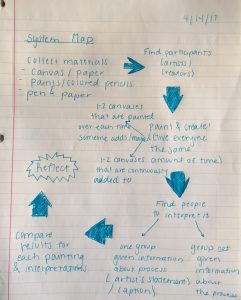
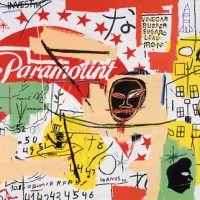

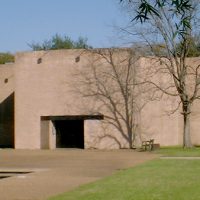
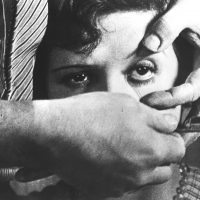
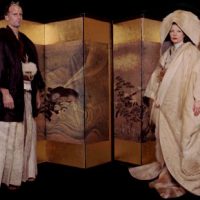
Your project is well sought out and you know what you are going to need to proceed this project. It’s a good thing! I really like the idea of letting people guess? the art piece. And i do understand the struggle for the participants to give out their genuine opinion because you are asking for a favor after all. but i feel like you are going to a right direction with your project, you know how to continue from this idea. good luck!